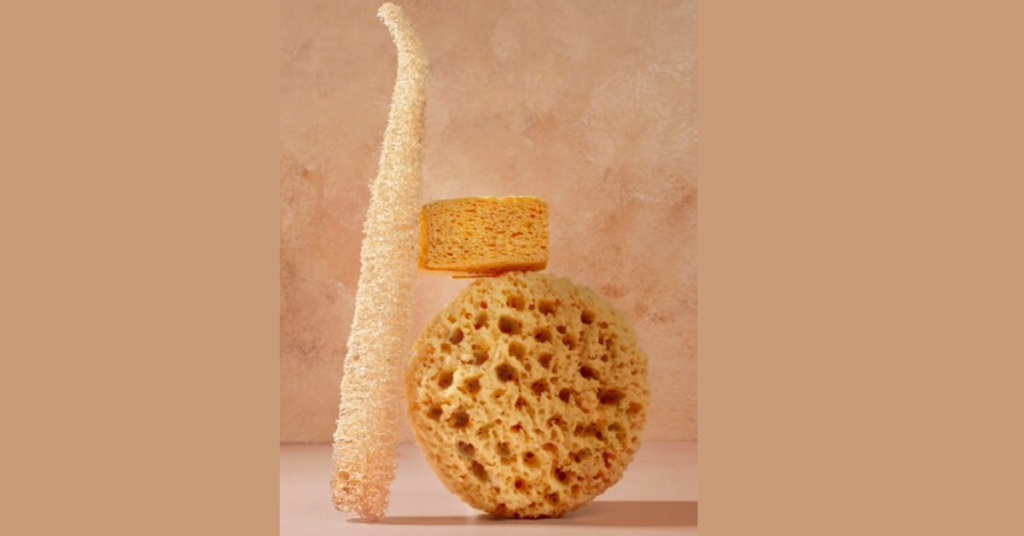Natural loofa, derived from the fibrous interior of the luffa plant, have long been celebrated for their exfoliating properties. These spongy, cylindrical brushes have a variety of uses, primarily in personal hygiene routines, due to their ability to gently scrub and rejuvenate the skin. However, the natural nature of loofas also means they can harbor a variety of microorganisms. This article delves into the benefits of natural loofas, their uses, and the potential risks associated with them.
What Is a Loofa?
A loofa (or luffa) is a type of sponge that comes from the mature fruit of the Luffa plant, which belongs to the Cucurbitaceae family. The plant is closely related to cucumbers and zucchinis. While fresh luffa fruit resembles a cucumber, once dried, it reveals a fibrous network that can be used as a scrubber. There are two main types of loofas:
- Luffa aegyptiaca: Often referred to as the smooth luffa, this variety is more commonly used as a sponge.
- Luffa acutangula: Known as the ribbed luffa, this variety is used more frequently in cooking and traditional medicine.
Also Read: Is Dctom a Legitimate Website? A Comprehensive Analysis
The Benefits of Using Natural Loofas
1. Exfoliation
One of the primary benefits of natural loofas is their effectiveness in exfoliating the skin. The coarse texture of the loofa helps remove dead skin cells, which can lead to smoother, more radiant skin. Regular exfoliation can also prevent clogged pores and reduce the likelihood of acne.
2. Improved Circulation
Using a loofa in your shower or bath routine can stimulate blood flow to the skin. The massaging action of the loofa promotes circulation, which may contribute to healthier skin and a more even skin tone.
3. Cellulite Reduction
While the effectiveness of loofas in reducing cellulite is debated, some users find that regular exfoliation can temporarily reduce the appearance of cellulite. The massaging action may help in breaking down fat deposits and improving lymphatic drainage.
4. Eco-Friendly Alternative
Natural loofas are biodegradable and environmentally friendly. Unlike synthetic sponges, which can take hundreds of years to decompose, loofas break down naturally, making them a more sustainable option for personal care.
5. Versatility
Loofas are not limited to just skin care. They can be used to clean hard-to-reach areas in the kitchen or bathroom, as well as for gentle scrubbing of fruits and vegetables.
How to Use a Natural Loofa
1. Preparation
Before using a new loofa, it’s essential to soak it in water to soften it. This step ensures that the loofa is gentle on your skin and allows for a more effective scrubbing experience.
2. Exfoliation Routine
For optimal results, use the loofa in a circular motion on damp skin. Apply a gentle body wash or soap to the loofa, and scrub your skin, focusing on areas prone to roughness or dryness. Avoid excessive pressure, which can irritate the skin.
3. Cleaning and Maintenance
After each use, rinse the loofa thoroughly and squeeze out excess water. Allow it to dry completely in a well-ventilated area to prevent mold and bacteria growth. It’s advisable to replace your loofa every 6 to 8 weeks or sooner if it shows signs of wear.
Risks and Concerns
While natural loofas offer several benefits, there are potential risks associated with their use, primarily related to hygiene and the presence of microorganisms.
1. Bacterial Growth
Loofas, being porous and absorbent, can harbor bacteria if not properly cleaned and dried. Moist environments are conducive to bacterial growth, which can lead to skin infections or other health issues. To mitigate this risk, ensure your loofa is thoroughly cleaned and dried after each use.
2. Fungal Infections
In addition to bacteria, loofas can also be a breeding ground for fungi. Athletes’ foot and other fungal infections may be exacerbated by using a contaminated loofa. Regular cleaning and proper drying are crucial in preventing such issues.
3. Skin Irritation
Overuse or aggressive scrubbing with a loofa can lead to skin irritation, redness, or abrasions. It’s essential to use the loofa gently and to listen to your skin’s response. If you experience discomfort, reduce the frequency of use or opt for a softer loofa.
4. Allergic Reactions
Some individuals may have allergic reactions to natural loofas, although this is relatively rare. If you notice any signs of an allergic reaction, such as itching or rash, discontinue use and consult a healthcare professional.
Alternatives to Natural Loofas
For those who are concerned about the potential risks of natural loofas, several alternatives are available:
- Synthetic Sponges: These are often more resistant to bacterial growth and can be a suitable option if you prefer a more hygienic alternative.
- Exfoliating Gloves: Made from various materials, these gloves provide a similar exfoliating effect and are often easier to clean and maintain.
- Silicone Scrubbers: These are durable, easy to clean, and less likely to harbor bacteria or fungi compared to natural loofas.
- Chemical Exfoliants: For those looking to avoid physical exfoliation altogether, chemical exfoliants like alpha hydroxy acids (AHAs) and beta hydroxy acids (BHAs) can provide effective exfoliation without the need for physical scrubbing.
Conclusion
Natural loofas are a popular and eco-friendly option for exfoliating the skin and improving circulation. Their benefits include effective exfoliation, improved skin texture, and environmental sustainability. However, users must be aware of the potential risks associated with bacterial and fungal growth and ensure proper cleaning and maintenance to minimize these risks. For those seeking alternatives, synthetic sponges, exfoliating gloves, silicone scrubbers, and chemical exfoliants offer viable options. Ultimately, the choice of exfoliation method depends on individual preferences and skin care needs.







